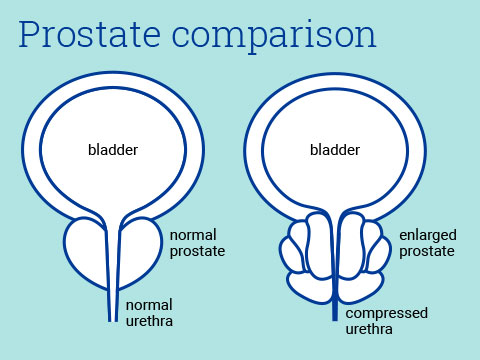This non-surgical procedure is commonly performed in men who have benign prostatic hyperplasia (BPH) and suffer from lower urinary tract symptoms. Men can develop urinary symptoms because the enlarged prostate blocks urine from flowing out of the bladder.
These urinary symptoms include frequent urination, nighttime urination, straining during urination, feelings of incomplete bladder emptying, and a weak urinary stream.
Men who are dependent upon a foley catheter due to an enlarged prostate can also benefit from this procedure. Embolization of the prostate can allow for prostate shrinkage and subsequent Foley catheter removal.
